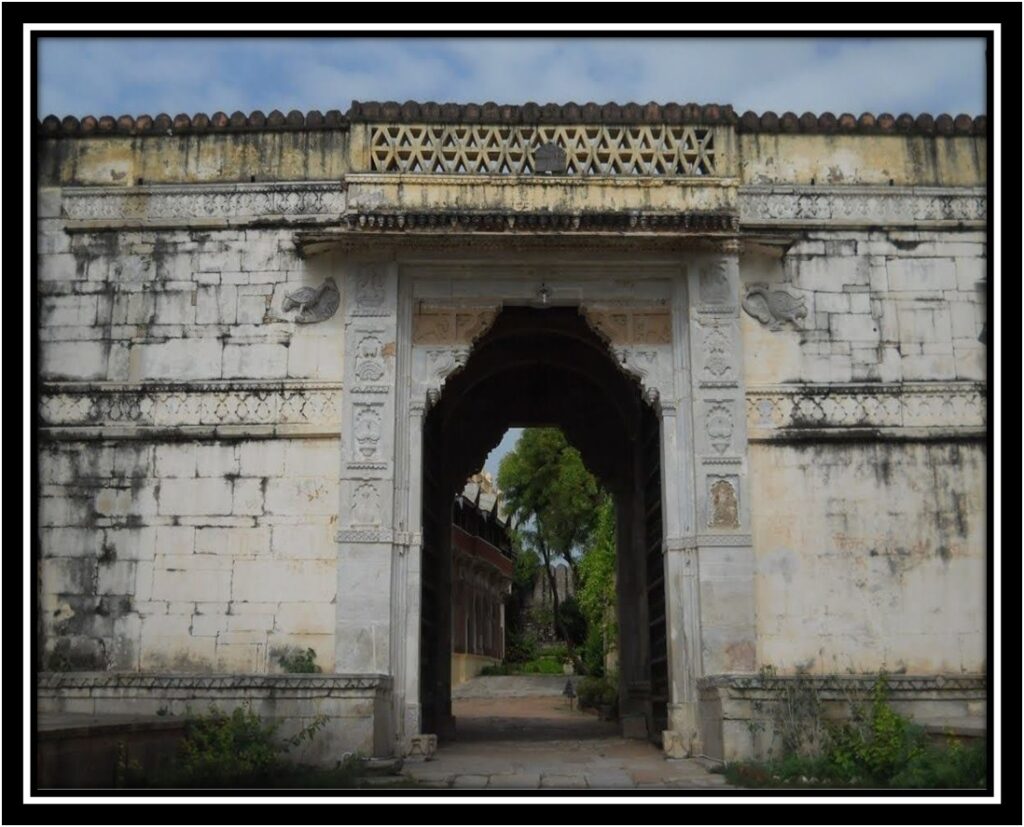Fort Auwa: A Symbol of Rajput Valor and Resistance

Introduction
Rajasthan, known as the land of forts and palaces, boasts a rich historical legacy shaped by Rajput valor and architectural grandeur. Among its many forts, Fort Auwa stands as a testament to the region’s indomitable spirit and historical significance. Located in the Pali district of Rajasthan, it played a crucial role in India’s resistance movements, particularly during the Revolt of 1857. This article explores the history, architectural significance, and cultural heritage of Fort Auwa, shedding light on its role in shaping Rajasthan’s past.
Historical Background of Fort Auwa
Fort Auwa has a rich and tumultuous history, deeply intertwined with the Rajputana legacy. It served as the stronghold of the Champawat clan of Rathore Rajputs, who fiercely defended their land and honor. It gained prominence during the First War of Indian Independence in 1857, when Thakur Kushal Singh of Auwa led an armed rebellion against British rule.
During the revolt, it became a rallying point for Rajput warriors resisting colonial oppression. British forces launched multiple attacks to capture the fort, but the defenders displayed unmatched resilience. Eventually, the British succeeded in overpowering the stronghold after an intense siege. However, the valiant resistance at there remains an inspiring chapter in India’s history.
Architectural Significance of Fort Auwa
Fort Auwa exemplifies traditional Rajput fort architecture, featuring robust defense structures, intricate carvings, and impressive gateways. The fort’s design reflects a blend of military strategy and aesthetic grandeur, making it a unique landmark in Rajasthan.
1. Strong Defensive Structures
The fort boasts massive battlement walls, strategically placed watchtowers, and a series of gates to fortify its defenses. These structures were designed to withstand prolonged sieges and attacks.
2. Majestic Entrance and Gates
The grand entrance of Fort Auwa is adorned with traditional Rajput motifs and inscriptions, symbolizing the warrior ethos of the Rathore dynasty. The massive wooden gates, reinforced with iron spikes, ensured protection against enemy invasions.
3. Palatial Complex and Courtyards
Inside the fort, remnants of royal quarters, temples, and administrative buildings reflect the lavish lifestyle of its rulers. The courtyards and inner chambers exhibit exquisite Rajput architectural elements, including ornate balconies and finely crafted pillars.
4. Underground Tunnels and Escape Routes
Like many Rajput forts, Fort Auwa features a network of underground tunnels, believed to have been used for emergency escapes and strategic movements during conflicts.
Role in the 1857 Revolt
The Revolt of 1857 marked a significant chapter in Fort Auwa’s history. Thakur Kushal Singh, the ruler of Auwa, joined forces with other Rajput leaders to challenge British supremacy. His leadership and military tactics turned into a formidable resistance base.
Key Events of the Revolt at Fort Auwa:
- Thakur Kushal Singh mobilized Rajput warriors and launched attacks on British camps.
- The British retaliated by laying siege to the fort, leading to a prolonged battle.
- Despite their fierce defense, Rajput forces eventually succumbed to the overwhelming firepower of the British army.
- The British captured Fort Auwa, but the resistance showcased the courage and determination of its defenders.
Cultural and Heritage Importance
Beyond its military significance, Fort Auwa holds immense cultural and heritage value. It stands as a reminder of Rajasthan’s enduring spirit and the sacrifices made for freedom.
- Festivals and Events: Today, the descendants of the Rathore clan organize annual gatherings to honor their ancestors and celebrate Rajasthan’s rich traditions.
- Tourism and Conservation Efforts: Efforts are being made to preserve the fort’s architectural and historical essence. It serves as an educational site for history enthusiasts and tourists eager to explore Rajasthan’s heritage.
Visiting Fort Auwa
Fort Auwa remains a fascinating destination for travelers, historians, and architecture lovers. Here’s what you need to know before visiting:
- Location: Pali district, Rajasthan, India
- Best Time to Visit: October to March (pleasant weather for exploration)
- Entry Fee: Varies; some areas may require permission for access
- Nearby Attractions: Ranakpur Jain Temple, Kumbhalgarh Fort, and Jawai Leopard Conservation Reserve
Conclusion
Fort Auwa stands as a powerful symbol of Rajput bravery, resistance, and architectural excellence. Its role in the Revolt of 1857, combined with its magnificent structure, makes it a must-visit destination for those interested in Indian history. While time and conflict have taken their toll on the fort, its legacy endures as a beacon of Rajasthan’s valor and cultural richness.
By preserving and promoting, we ensure that future generations continue to learn from its inspiring history and appreciate the architectural marvels left behind by the Rajput warriors. Whether you are a history enthusiast, an architecture lover, or a traveler seeking offbeat heritage sites, Fort Auwa offers a captivating journey through time.






